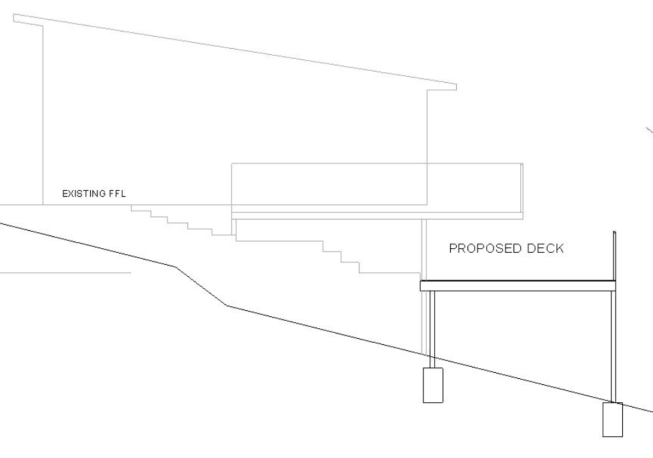A client would like to extend his exterior deck to support a 2000kg hot tub (4.4 kips). The new deck steps down from the existing and approximately 4m x 5m in plan, 2.5 m (9 ft) above ground and on sloping site. Is there any guidance for loading, corrosion, and safety for hot tubs on exterior decks?

Loading - The client says the hot tub is 2000kg (tub + water + 6 people). If 6 people are in the tub, how many more would be standing around the tub? What do you recommend loading wise? Dynamic factor for live load (say 2x LL)? Thinking of drunk people and jumping around - high consequence for failure.
Bracing & Layout – Deck is self-supported and about 1.5m below the ground floor of the house. Looking at post and brace on each side of rectangular deck.
Corrosion - Chlorine is present but it is open-air, well ventilated area (open-air). My first thought was with (4) steel posts and beams, with timber decking and joist running over the steel beams. For corrosion purposes, would be recommended to go with full timber? Timber option = 9 posts (3 x 3 grid) with one post at each corner of the hot tube.
Safety – Client wants tub on outside face of the deck. The handrail is about the same height was the edge of the tub, so would that mean the handrail should be double height at that point? Another option would be to recess the hot tub into the deck. This seems much safer and would require a subframe to support the tub. Any suggestions?

Loading - The client says the hot tub is 2000kg (tub + water + 6 people). If 6 people are in the tub, how many more would be standing around the tub? What do you recommend loading wise? Dynamic factor for live load (say 2x LL)? Thinking of drunk people and jumping around - high consequence for failure.
Bracing & Layout – Deck is self-supported and about 1.5m below the ground floor of the house. Looking at post and brace on each side of rectangular deck.
Corrosion - Chlorine is present but it is open-air, well ventilated area (open-air). My first thought was with (4) steel posts and beams, with timber decking and joist running over the steel beams. For corrosion purposes, would be recommended to go with full timber? Timber option = 9 posts (3 x 3 grid) with one post at each corner of the hot tube.
Safety – Client wants tub on outside face of the deck. The handrail is about the same height was the edge of the tub, so would that mean the handrail should be double height at that point? Another option would be to recess the hot tub into the deck. This seems much safer and would require a subframe to support the tub. Any suggestions?

![[bigsmile] [bigsmile] [bigsmile]](/data/assets/smilies/bigsmile.gif)